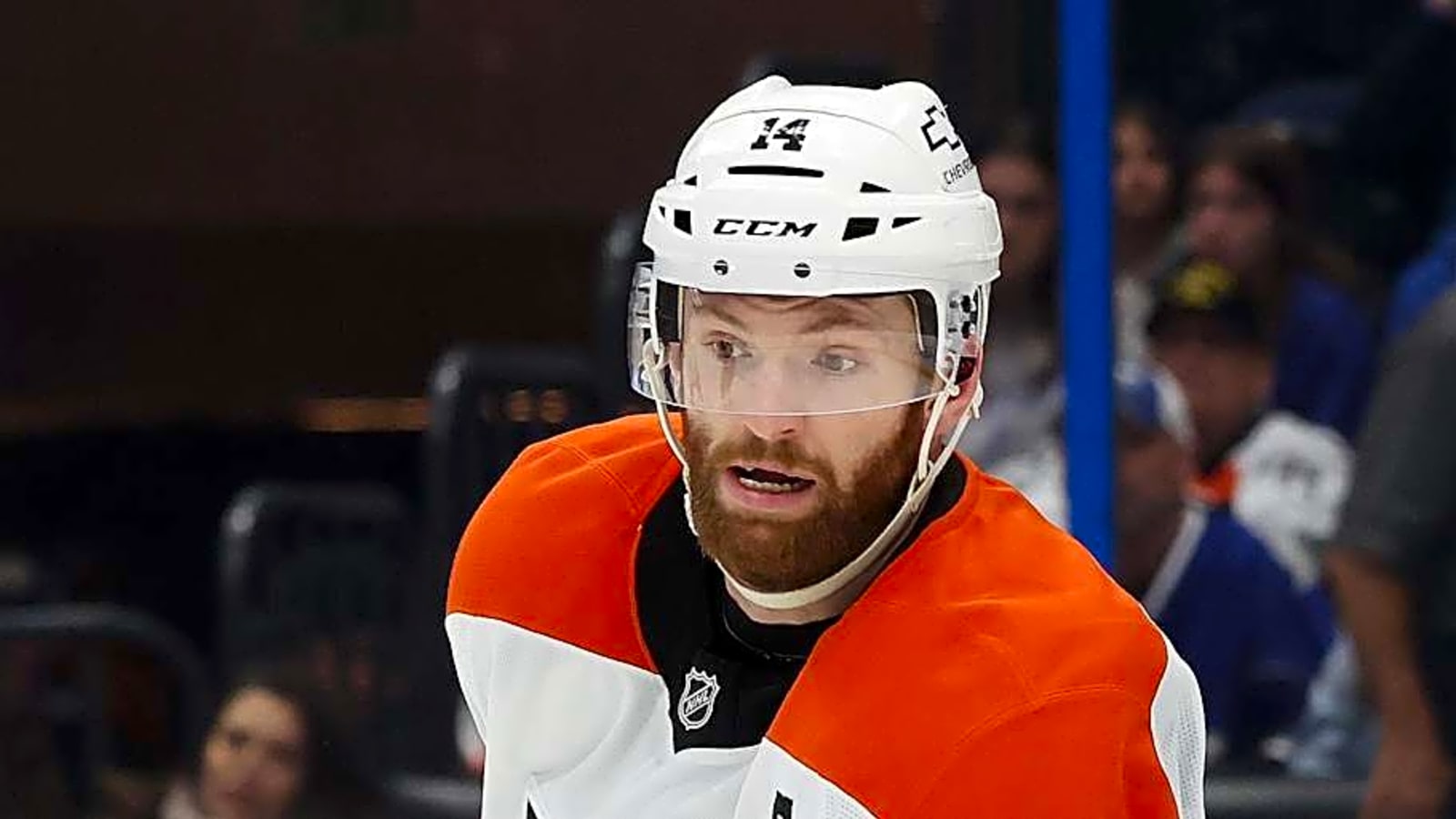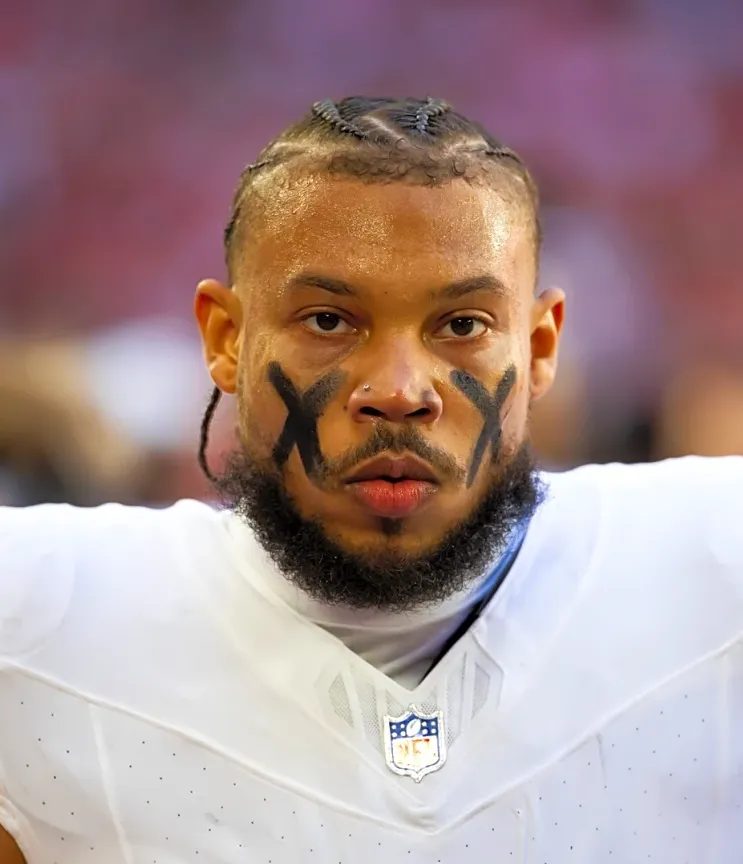
Mar 17, 2025; Tampa, Florida, USA; Philadelphia Flyers center Sean Couturier (14) against the Tampa Bay Lightning during the second period at Amalie Arena. Mandatory Credit: Kim Klement Neitzel-Imagn Images Kim Klement Neitzel-Imagn Images
When Sean Couturier takes the opening face off this fall, it won’t just mark the start of another season — it will mark the beginning of his 14th year as a Philadelphia Flyer. In a league where turnover is constant, that’s a rarity. Couturier has worn the “C,” captured the Selke Trophy and played through injuries that would have ended other careers. But now, in 2025, his role is shifting once again: from being the team’s do-it-all center to becoming the steadying force for a roster still taking shape under new head coach Rick Tocchet.
The Flyers of today look nothing like the team Couturier broke in with back in 2011. Gone is the grizzled veteran core that once included Claude Giroux, Jakub Voráček and Wayne Simmonds. The 2025 Flyers are younger, faster and firmly in the middle of a rebuild — but they’re also in a more clearly defined direction than in years past. Matvei Michkov enters his sophomore season after an electric rookie campaign, Trevor Zegras looks to turn his career around with a fresh start in Philadelphia and 2025 first-round pick Porter Martone brings size and scoring potential to the pipeline. Tocchet’s arrival signals a more physical, detail-oriented style, but it’s Couturier who will be tasked with enforcing those habits on the ice and in the locker room.
For the 2011 first-round selection, the challenge isn’t just about production. At 32, after two back surgeries and nearly two lost seasons earlier in the decade, he has to show he can still match up with the league’s best while helping the next generation grow. Tocchet will likely lean on him in all situations — late defensive zone draws, penalty kill and mentoring young centers like Noah Cates and Tyson Foerster on the nuances of the game. If Couturier thrives in that role, the Flyers’ path back to contention becomes clearer. If not, the conversation may shift to whether the team’s future leadership core lies elsewhere.
This season could serve as a bridge year for Philadelphia. Michkov’s development, Martone’s progress and the integration of Tocchet’s system are all priorities — but so is establishing a leadership culture that can carry into a playoff push in the coming seasons. Couturier’s steady presence has been the one constant in more than a decade of organizational change. In 2025, whether that constant remains an on-ice cornerstone or evolves into more of an off-ice role will say a lot about where the Flyers truly stand.
Fourteen seasons with one franchise is an achievement in itself. But for Sean Couturier, season No. 14 might be the most important yet — not because of where the Flyers are, but because of where they want to go. And if Tocchet’s vision comes to life, Couturier’s fingerprints will be all over it.
At his peak between 2017 and 2021, Couturier was among the NHL’s most dominant two-way centers. He averaged 0.83 points per game in those years, posting 286 points in 342 games, and was a force defensively — consistently ranking in the top 5% league-wide for Corsi For Percentage (CF%) and expected goals against per 60 (xGA/60). His 2019-20 Selke-winning campaign saw him generate an xGF% of 46.2%, demonstrating his ability to tilt possession in the Flyers’ favor even against top competition. His face off win percentage hovered near 56%, cementing his role as a reliable puck possession initiator.
However, back surgeries in February 2022 and October 2022 sidelined Couturier for nearly two full seasons, an absence that coincided with the Flyers bottoming out in possession metrics and defensive efficiency. During those 135 missed games, Philadelphia’s 5-on-5 CF% dropped from 48.7% to 45.2%, and the team’s expected goals against per 60 increased by nearly 0.8, illustrating the void left by their captain’s absence.
Upon his return in 2023-24, Couturier logged 74 games, registering 11 goals and 38 points — a respectable total but a sharp decline from his pre-injury offensive pace of 0.83 points per game, dropping to approximately 0.51 points per game. His 5-on-5 CF% fell below 50% for the first time in years, and his xGF% dropped to 48.1%, indicating a team and player still adjusting to lost time and evolving roles. Couturier showed to slightly return to his former self in the 2024-25 season, logging 45 points and missing only three contests.
Tocchet’s appointment as head coach brings a shift toward a high-energy, physical style rooted in relentless puck pursuit, board battles, and disciplined defensive structure — traits that align well with Couturier’s strengths. Tocchet’s system demands consistent compete level and positional discipline, qualities Couturier has displayed throughout his career.
Yet, at age 32 and recovering from significant injury, the question becomes: Can Couturier sustain the skating and endurance needed to thrive? Early reports from Flyers training camp praise his “hockey IQ and compete,” but Tocchet is expected to manage Couturier’s ice time carefully, aiming for about 18-20 minutes per game, down from the 22+ minutes he averaged before injuries. This targeted usage could help preserve his effectiveness during high-leverage moments like late defensive zone draws and penalty kills.
Couturier’s mentorship role has also intensified. With the departure of Cutter Gauthier in 2024, leadership and development responsibilities have shifted toward Couturier guiding a young forward core that includes Michkov, coming off a 63-point rookie season, and 2025 first-round pick and recent Michigan State commit Porter Martone, a 6-foot-3 power forward expected to add scoring depth in coming years. His ability to impart professional habits and positional awareness will be key for these players’ transitions.
Couturier is under contract through the 2029-30 season at $7.75 million AAV, anchoring the middle of the roster during a critical window of youth development and roster turnover. As Michkov and Martone develop into top-six options as Cates and Foerster continue their growth, Philadelphia’s depth chart down the middle will inevitably shift.
Statistically, if Couturier can maintain at least a 55% Corsi For rate and keep his points per game above 0.6 this season, he will continue to be a net positive at even strength and a cornerstone on special teams. However, if possession metrics slide further or his scoring dips below 0.5 points per game, the Flyers may reduce his role to a more specialized defensive shutdown center with reduced minutes to maximize longevity.
Fourteen seasons in one city is a rare achievement in today’s NHL, but Sean Couturier’s significance goes beyond longevity. He embodies the Flyers’ identity — a mix of skill, grit, and relentless compete. Now, as the team transitions into a new era under Tocchet, Couturier faces the toughest test of his career: proving he can still anchor an NHL lineup in the fastest, most competitive league the Flyers have ever faced.
-1749269849-q80.webp)

-1749134608-q80.webp)
